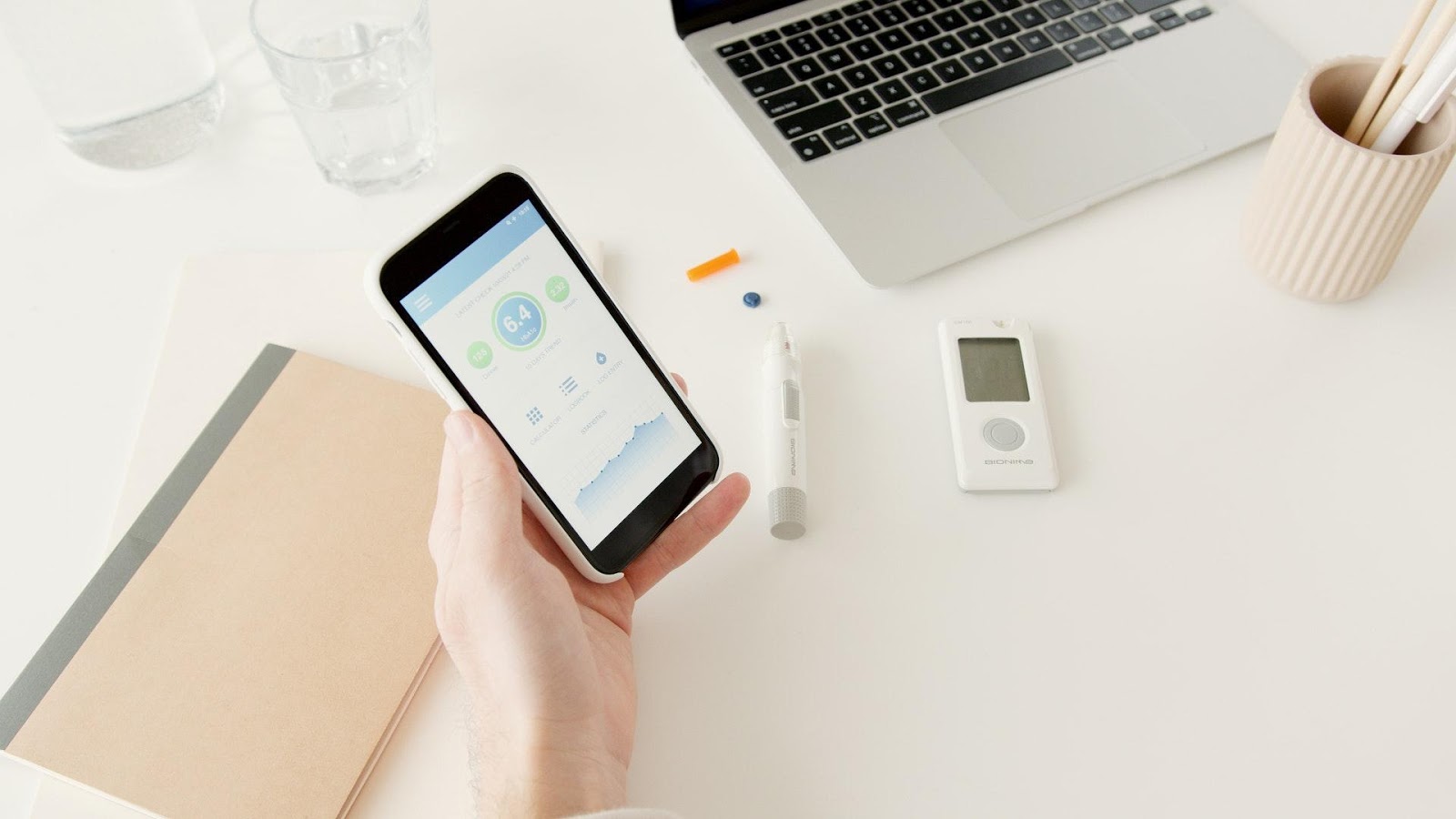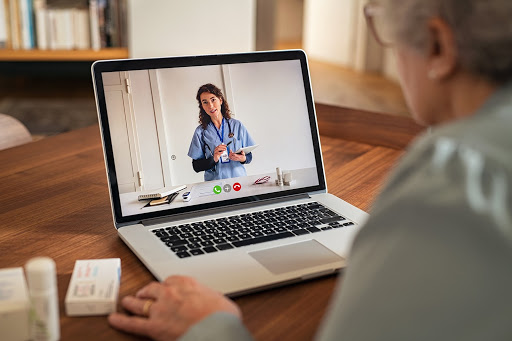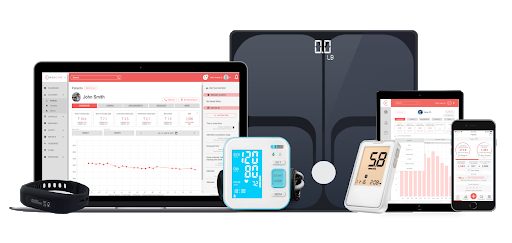What is Remote Patient Monitoring?
Simply put, remote patient monitoring (or RPM) is a virtual health system that makes medical care easier than ever. With the latest and greatest of today’s technologies, remote patient monitoring platforms deliver better medical outcomes through doctor-patient engagement and prevention-based care. The value of having an RPM system in place is showcased on full display once you understand insurance billing codes and how much revenue your practice could earn by implementing it.

The coronavirus pandemic completely changed how we live, and it helped speed up the adoption of at-a-distance medical care and patient relationship management. According to S&P Global, telehealth patient volumes jumped 4,000% between 2019 and 2020. But RPM’s benefits were gaining attention even before designer face coverings and quarantine sourdough starters.
Before 2020, 66% of consumers and 88% of healthcare providers indicated their interest in telehealthcare. Reports show that this demand will continue to skyrocket — to the tune of $175 billion by 2026.
Essentially, this growth comes down to telehealth’s success in overcoming common obstacles to great medical care. Patients can easily track their progress and talk to their doctor without in-office wait times or leaving the comfort of their home. And, as a data-fueled system, RPM amplifies these telehealth benefits even further.
It’s not just closing the gaps in healthcare, but also raising the standard of patient care, optimizing a practice’s revenue gains in the process, and making it easier than ever to operate your practice.
The Difference Between Telehealth and RPM
When we talk about digital healthcare services like RPM and telehealth, there can be some confusion about how different terms overlap.

Telehealth is an umbrella term that captures all aspects of virtual medical care. From video appointments to email reminders and interactive voice response (IVR) systems, telehealth can:
- Make healthcare more accessible regardless of a patient’s location or mobility
- Save time and money through virtual appointments
- Improve communication channels and consistency between patients and providers
- Provide better education and support for a patient’s health management
Remote patient monitoring, meanwhile, is a feature of telehealth. It builds on these telehealth services and complements them to improve overall medical care. Using consumer-friendly technologies like digital wearables, RPM provides ongoing patient support backed by data collection and monitoring. This engagement improves outcomes by:
- Building a more complete picture of a patient’s health
- Motivating patients to take a leading role in managing their own healthcare goals
- Broadening patient education in preventative wellness
- Constructing trends that can flag potential issues early
Basically, the platform provides a continuity of care for those at a higher risk of hospital admission, like patients managing a chronic illness, recovering from surgery, or experiencing a high-risk pregnancy. But with vital, lifestyle, and behavioral data all collected remotely, the RPM system helps prevention-based healthcare.
The Basics of RPM
RPM is all about better patient care, and increased revenue for your practice. Better efficiency and smoother workflows are just a natural result. Because remote patient monitoring is so versatile, it can integrate seamlessly into small private practices up to more complex medical systems.
The concept is pretty simple. Your patients have a remote patient monitoring app on their phones that connects to a device that measures key vitals of their specific condition. That data is sent directly to a corresponding dashboard at your practice, enabling doctors and staff to consistently monitor even the most at-risk patients during times you otherwise wouldn’t have information. At CoachCare, we set up live training with your clinical and billing staff to make the transition as smooth as possible and answer any questions they may have about the new processes.
Once the remote monitoring system is integrated, it’s just a matter of determining which patients will benefit the most from it.
There’s a range of RPM devices available, each that assists for a wide variety of patient goals ranging from weight loss to tracking chronic conditions. And, because these tools are designed to be as convenient as possible, your patients are more likely to keep checking in, thereby supplying more consistent data and increasing their participation in their health.
And just like that, your practice can start improving patient outcomes in just a few weeks.
How Does Remote Patient Monitoring Work?
RPM improves the overall partnership between patients and their providers, creating a continuous cycle of improved virtual care.
But how exactly does it help practices like yours? Here’s the basic breakdown of the components of RPM that work together to support your medical care:
Step 1: Data Collection & Transmission
RPM makes data collection more convenient than ever to track and review. Patients use their digital health wearables and trackers to remotely collect data on their vital signs, like:
- Blood pressure
- Heart rate
- Temperature
- Blood sugar
- Respiration rate
- Weight and body mass index (BMI)
The platform also supports holistic healthcare management, meaning that patients can log any key lifestyle or behavioral indicators a provider sets, such as:
- Prescription dosage and symptoms
- Sleep quality and duration
- Food and water intake
- Exercise and fitness activity
- Mental health metrics
This data is then automatically and securely transmitted to the remote health platform where the patient and their healthcare provider can access it any time.
Step 2: Provider Evaluation
With total access to a patient’s current picture of health, providers gain confidence in treatment plans — while being able to make adjustments as needed in real-time.
Remote health monitoring systems also have built-in artificial intelligence (AI) that flags irregularities, so you can step in as needed to address sudden changes or make adjustments. You can also set the system up to work for each patient to keep track of individual needs for each patient, such as setting up an alert when their blood pressure dips below a certain threshold. This way, you can provide feedback or tweak treatment in realt-time instead of waiting for an appointment that may be weeks away.
Step 3: Virtual Engagement
Ongoing tracking helps keep patients on track and also supports total health management through virtual communication. Providers facilitate their patient’s success with built-in engagement tools, including:
- Automated alerts that prevent lapses in data tracking
- Automated sequences that direct patients to resources in your digital library
- HIPPA-compliant video visits and messaging to keep communication channels open but secure
These alerts and video visits also count towards your billable hours and overall reimbursement, meaning that you’re maximizing the efficiency of your care and being compensated for it as well.
Step 4: Medical Response
Now that you’re receiving comprehensive, current, and consistent physiological data, it’s easier than ever to manage the quality of a patient’s treatment plan.

By monitoring trends and comparing data against expectations, providers guide patients between formal visits —reducing the risk of more radical interventions down the line.
Step 5: Reimbursement
To keep up with telehealth’s growing demand, the Centers for Medicare and Medicaid Services (CMS) and an increasing number of private insurers have recently expanded reimbursement guidelines.
These new Current Procedural Terminology (CPT) codes work to increase physician revenue streams, reimbursing practices for most time spent on remote care activities. With a full-service RPM platform like CoachCare, this process is even easier for your practice thanks to:
- Patient billing reports that are automatically populated with provider time logged and relevant billable codes
- Centralized organization for bulk claim submission
- Automated reminder and compliance checklists
- Expert claims support for any billing questions
The Benefits of Remote Patient Monitoring
Virtual health tracking technology delivers data-inspired treatment programs, but its benefits go beyond better patient outcomes.
With remote health monitoring, patients also benefit from:
- Increased and faster access to medical professionals from the comfort of their home
- Confidence with more engaging participation in their treatment plan
- Individualized support, education, and feedback from their healthcare provider
- Reduced risk of emergent situations and readmissions — and the associated costs
Of course, remote patient monitoring is just as lucrative for providers as well. Medical professionals face fewer treatment gaps with patients more compliant to their healthcare program. Medical practices also stand to gain significant financial and logistical benefits, including:
- Lower rates of patient readmission, reducing the burden on their facilities
- Increased revenue streams through RPM device sales, insurance reimbursement, and patient reactivation
- A smoother workflow that allows for more efficient care — so providers can take on more new patients
- Stronger relationships that build patient loyalty, keeping them in your practice’s pipeline and increasing referral rates
- An improved reputation by meeting today’s consumer demand for telehealth services
Partnering with a comprehensive remote patient monitoring company can scale these benefits even further. With CoachCare telehealth services, your patients get customized access to novel health monitoring technologies. But the system powers smoother telehealth management for your practice as well, with:
- Secure, digitized forms
- Simplified claims documentation with compliance reminders
- Access to expert support to ensure maximum claims reimbursement
- Automated time tracking, audit logging, patient messaging, and more
Get in touch to learn more about how your practice can optimize its patient care. We’ll design a CoachCare platform with features configured to your clinic’s workflow, processes, and patient needs in as little as two weeks.
